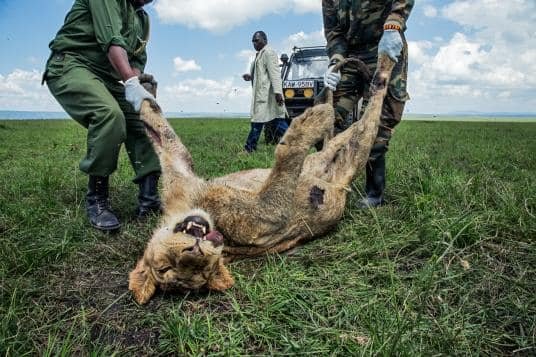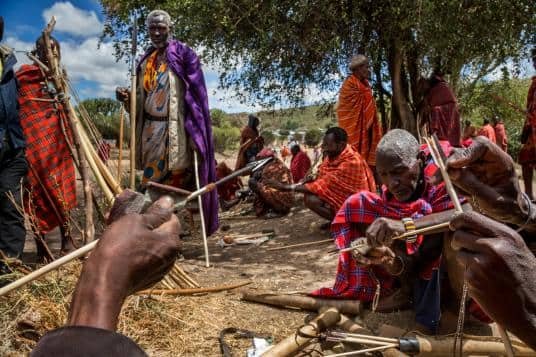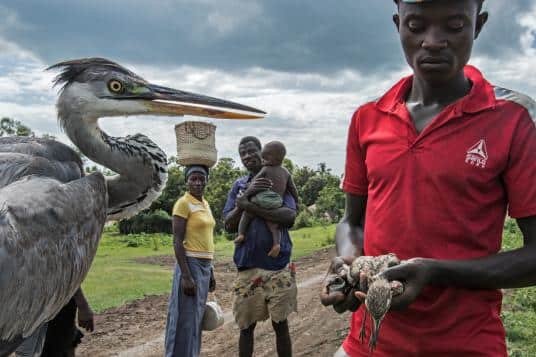Deadly chemicals are now a weapon of choice for those who see lions, elephants, and other wild animals as threats to livestock and property.

A young male lion was one of three members of Kenya’s famous Marsh Pride to die in 2015 after eating a cow carcass that Maasai herders had laced with carbosulfan, an insecticide. The lions had killed several cows.

A traditional way to kill animals with poison is to tip arrows—like these made by Maasai at a market in Olpusi Moru, on Kenya’s border with Tanzania—with a lethal substance from the bark of the Acocanthera tree.
TWO MALE LIONS had been killing cattle and goats for weeks. The Maasai herdsmen in Kenya’s Osewan region had seen enough.
Solve the problem by Christmas, the Maasai told the Kenya Wildlife Service in late December last year, or we’ll solve it for you. “We know how to kill lions,” one young Maasai warrior said in Swahili during a heated community meeting, and he didn’t mean only the spears that he and his fellow Maasai carry. He also meant poison, now a weapon of choice for herders who see lions as threats to their livelihood rather than the national symbols the wildlife service tries to protect.
Kenneth Ole Nashuu, a senior warden with KWS, as people call the wildlife service, decided that the best solution was to relocate the lions from Osewan, north of Amboseli National Park, where they’d come in contact with grazing livestock, to a neighboring national park, Tsavo West. But first they had to be tranquilized.
On Christmas Eve night Ole Nashuu and other rangers were joined by Luke Maamai, from the conservation group Lion Guardians. They climbed into a Land Cruiser, drove to a clearing in the bush, and parked. Under a big, bright moon, with lights off, they waited for the rogue predators—young brothers—to appear.

Conservationists hold a sickened gray heron and birds that died after aerial spraying of the pesticide fenthion in the Bunyala rice-growing area. Villagers collect and eat the birds, even though they’re poisoned.
Maamai, who’s Maasai, placed a speaker on the roof of the vehicle and broadcast into the darkness the recorded bleating of a dying buffalo calf, a sound lions can’t resist. After just 15 minutes a large animal stepped from the shadows on the right. Ole Nashuu switched on his headlights. It was a lioness, one of two sisters that partnered with but weren’t related to the brothers. The lioness, about 10 yards in front of the vehicle, moved cautiously toward a small tree Maamai had baited with goat innards. Ole Nashuu signaled to a veterinarian who was sitting in a second Land Cruiser, his rifle loaded with a tranquilizer dart.
Source
Plagiarism is the copying & pasting of others work without giving credit to the original author or artist. Plagiarized posts are considered spam.
Spam is discouraged by the community, and may result in action from the cheetah bot.
More information and tips on sharing content.
If you believe this comment is in error, please contact us in #disputes on Discord
Warning! This user is on my black list, likely as a known plagiarist, spammer or ID thief. Please be cautious with this post!
If you believe this is an error, please chat with us in the #cheetah-appeals channel in our discord.